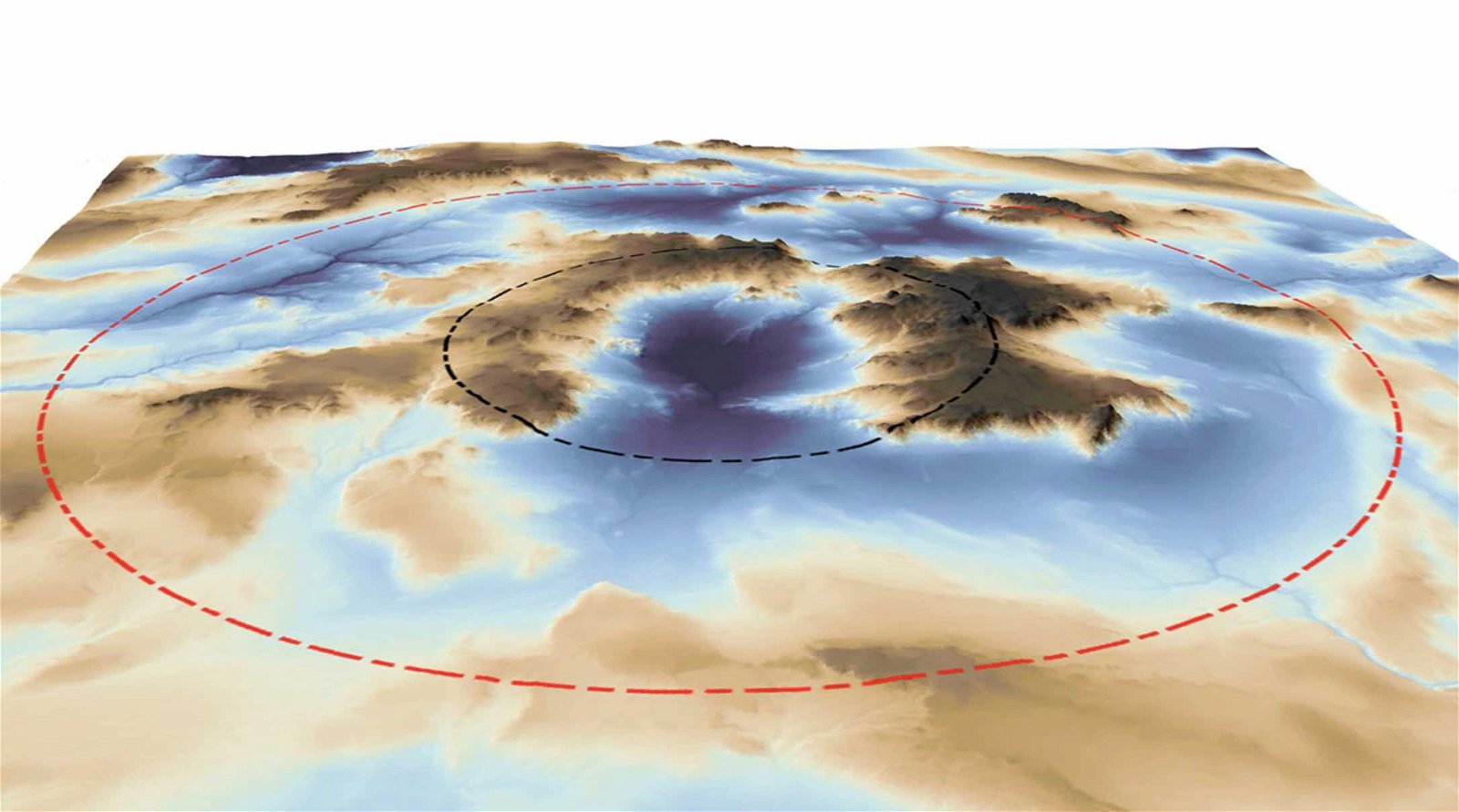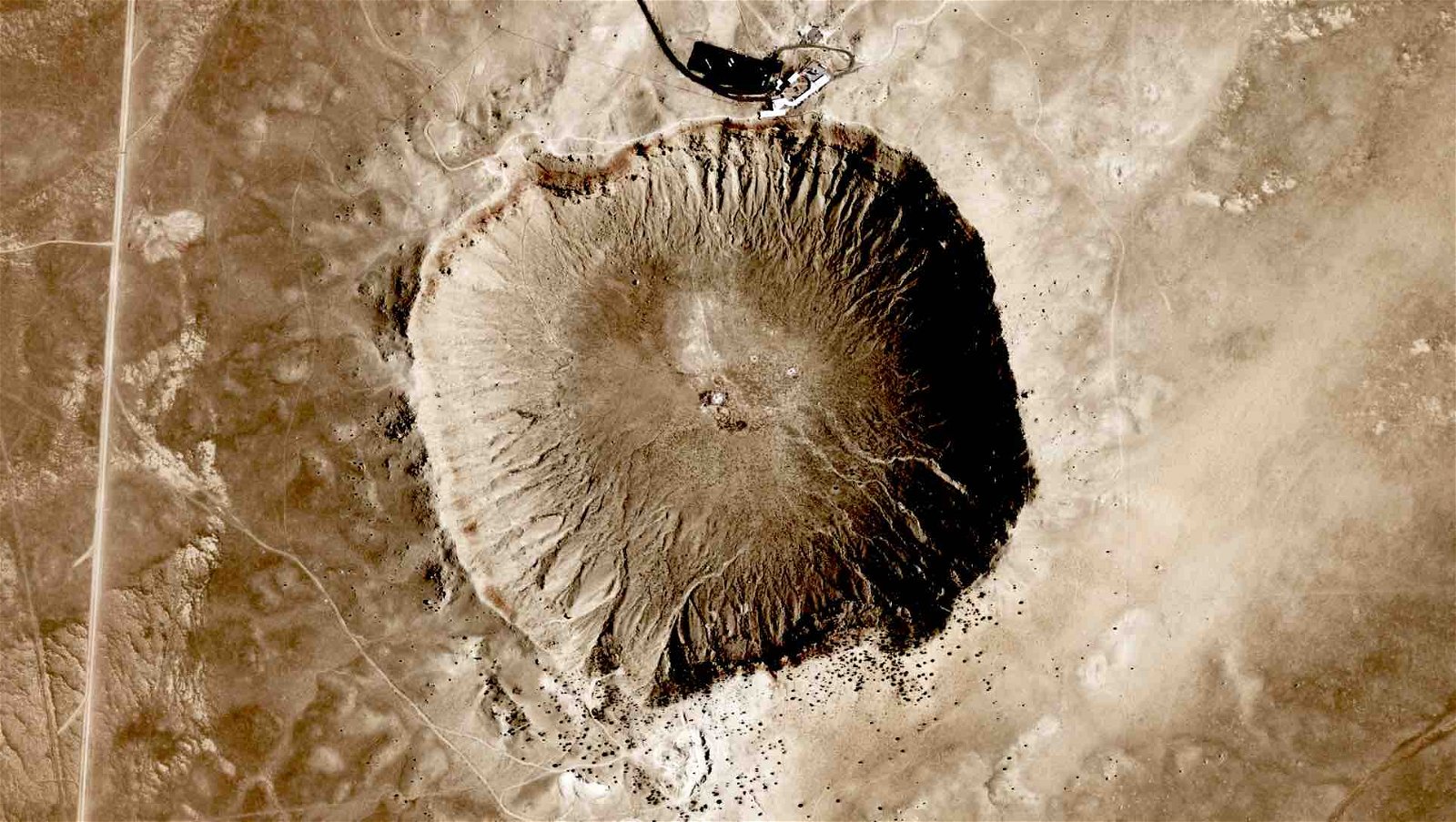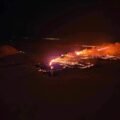In 2018, the discovery of a massive asteroid impact feature in northwest Greenland came as a surprise to many planetary scientists and others studying impact events that have occurred in Earth’s long history.
Despite being an estimated 20 miles in length, it was also clear why this particular impact feature evaded detection for so long: it was concealed beneath more than 3000 feet of ice, which had slowly accumulated since the last ice age.
Detected from aerial radar surveys, the huge impact feature comprised a circular depression visible in the subglacial bedrock, around which a clearly discernible elevated rim could be seen, along with other gradually deteriorating features that had lingered since the original impact occurred. Analysis of sediment collected from the location indicated the space object that left the feature was mostly composed of iron.


“This crater is potentially one of the 25 largest impact structures on Earth,” wrote the authors of a 2018 paper that appeared in Science, “and it is the only one of this size that still has a significant portion of its original surface topographic expression.” Although the exact date of the event remains in question, it was later estimated that the feature could be as old as 58 million years.
Fast forward to the present day, when in February 2023, we observed the 10th anniversary of the Chelyabinsk meteor. By some estimates, the event may represent the second-largest entry of a celestial body into Earth’s atmosphere since the blast in 1908 that flattened close to 830 square miles of the Siberian forest near the Podkamennaya Tunguska River in what is now Krasnoyarsk Krai, Russia. The shock wave of the 2013 Chelyabinsk event resulted in injury to 1,500 people and damage to nearly twice as many buildings.
“The Chelyabinsk meteor alerted scientists and authorities about the need to identify and monitor such celestial bodies before they reach our planet,” according to a statement at the official website of Asteroid Day, an annual event observed on June 30 co-founded by names that include astrophysicist and Queen guitarist Brian May, Ph.D., Apollo 9 astronaut Rusty Schweickart, and several others who recognize the significant threat asteroids pose to life on Earth.
“[The Chelyabinsk] event changed people’s mindsets,” the statement reads, “and we have seen significant efforts made to prevent catastrophic episodes in the future.”
One of the most concerning things about the Chelyabinsk event has to do with the ease at which the asteroid evaded our detection systems in use at the time. On the same day the Chelyabinsk asteroid exploded over eastern Russia, NASA had been tracking an entirely unrelated space object, 2012 DA14, as it passed within just 17,200 miles from Earth. Traveling in the opposite direction from the asteroid that entered our planet’s atmosphere over Russia, the two objects couldn’t have been related in any way other than that their approach near Earth occurred at the same time. However, in doing so, astronomers focused on 2012 DA14 were somewhat taken off guard once reports of a blast over Chelyabinsk made their way into international headlines. Soon, the news stories were accompanied by video and audio recordings of the blast that knocked windows out of buildings and shocked many residents of the eastern Urals.


The incident was a wake-up call for astronomers and planetary scientists and underscored just how dangerous asteroid impacts on our planet can be. In the aftermath of Chelyabinsk, NASA established its Planetary Defense Coordination Office (PDCO), which now provides enhanced early detection of potentially hazardous objects (PHOs) emanating from space, which it tracks and characterizes, along with the issuance of periodic warnings about the potential effects of impact events.
“Recent research suggests that Chelyabinsk-type events occur every 30 to 40 years,” read an official NASA report published at the time, adding that such events occur “with a greater likelihood of impact in the ocean than over populated areas, while impacts from objects greater than a mile in diameter are predicted only once every several hundred thousand years.”
However, more recent studies could indicate that potential threats related to asteroid impacts could be greater than previously realized.
In early March 2023, James Garvin, chief scientist with NASA’s Goddard Space Flight Center, presented new findings on impact features at the Lunar and Planetary Science Conference at Johnson Space Center. Based on recent satellite data, Garvin thinks previously hidden features of ancient impact features could indicate they are much larger than they appear and thereby represent events that were potentially far more devastating than previously thought.


Based on Garvin’s estimates, each crater he and other researchers analyzed in the tens of kilometers size range probably resulted in an explosion ten times greater than the largest nuclear explosion in history. Such a blast would not only be deadly to life on the ground; it would be capable of dislodging a portion of Earth’s atmosphere, propelling it into space.
Such blasts are still smaller than the one that killed the dinosaurs 65 million years ago, represented today by the massive Chicxulub crater, remnants of which are still visible in the Gulf of Mexico. However, Garvin says that such impact events are destructive enough that they could certainly cause massive upset to Earth’s climate, in addition to other cataclysmic changes that have accompanied extinction-level events throughout Earth’s prehistory.
According to Garvin and his team’s research, there might have been as many as a dozen kilometer-sized asteroids that smashed into Earth, with at least a quarter of them striking land. However, not everyone agrees with what Garvin has proposed. Polish Academy of Sciences crater researcher Anna Łosiak told Science that if Garvin’s findings were accurate, it would mean “we really don’t understand what’s going on at all” with asteroid impacts. Although she doubts the findings, Łosiak concedes that Garvin’s interpretation would mean “that there are a lot of space rocks that may come and make a mess.”
If one of NASA’s chief scientists is indeed correct about the recent asteroid assessment, it could obviously mean that there is far more to be concerned about in the event of future asteroid approaches that could potentially endanger our planet. Fortunately, the recent success of NASA’s Double Asteroid Redirection Test (DART), which demonstrated the ability to use kinetic impactor spacecraft to offset the motion of potentially dangerous near-Earth objects (NEOs), offers a hopeful outlook for Earth and its future.
“This mission shows that NASA is trying to be ready for whatever the universe throws at us,” NASA Administrator Bill Nelson said last October after the initial successful impact of the DART spacecraft with the surface of asteroid Dimorphos 285. “NASA has proven we are serious as a defender of the planet. This is a watershed moment for planetary defense and all of humanity, demonstrating commitment from NASA’s exceptional team and partners from around the world.”
For the first time in our planet’s history, the denizens of this planet may finally be capable of preventing future life-threatening asteroid impacts, the likes of which have brought devastation to Earth countless times in the distant past. That success, of course, will be dependent on our ability to successfully detect those threats before they are too close to avoid.
“All of us have a responsibility to protect our home planet,” Nelson added following the release of the DART mission findings last year.
“After all, it’s the only one we have.”
Micah Hanks is the Editor-in-Chief and Co-Founder of The Debrief. He can be reached by email at micah@thedebrief.org. Follow his work at micahhanks.com and on Twitter: @MicahHanks.

